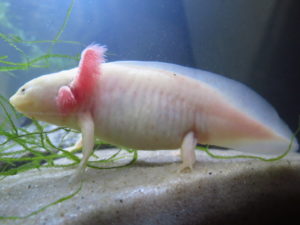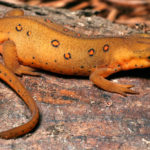Facts about axolotls
 Axolotl, often seen in pet stores or in aquarium collections, seems to have disappeared from his natural habitat. The homeland of this amphibian is the system of lakes and canals in Sochi on the outskirts of Mexico City, which are included in the UNESCO World Heritage List. These animals are in the form of larvae and reach puberty, without turning into an adult form.
Axolotl, often seen in pet stores or in aquarium collections, seems to have disappeared from his natural habitat. The homeland of this amphibian is the system of lakes and canals in Sochi on the outskirts of Mexico City, which are included in the UNESCO World Heritage List. These animals are in the form of larvae and reach puberty, without turning into an adult form.
- They are almost blind. Feeding them with hands is the only way to feed them, in which they “see” their food.
- Most axolotls are dark gray, dark green or black. However, there are also white ones, which came from a mutant brought to Paris in 1863.
- Axolotl reaches up to 30 cm in length and can weigh up to 3.5 kg.
- Axolotl – a vivid example of neoteny, that is, “the presence of features of the larval stage of development in an adult”, as indicated, for example, by pinnate fins.
- The word “axolotl” has a lot of interpretations. The most popular are “water dog”, “water doll”, “water slave” and “water minister”.
- During the mating season, the axolotl female may lay 300 to 1100 eggs.
- Axolotl is a loner. Except for the mating season.
- In 2008, axolotls were recorded as a threatened species, and their wild population was declining.
- Axolotls have no age!
- Axolotls – bottom amphibians, at the bottom they manage to escape from predators.
- Axolotls put scientists at a loss: they can grow lost limbs, kidneys, lungs and even hearts, which makes them well-prepared for life guys.
- In a convenient aquarium in your home they can live up to 15 years.
- Aztec god Xolotl, according to legend, was afraid to be killed and therefore turned to axolotl.
- Thanks to the mystical halo surrounding the axolotl, it was used to prepare some Aztec medicines.
- Axolotls are carnivorous! They feed on tadpoles, insects, worms and even small fishes. They can also be fed with slices of raw meat.
- But the best thing about axolotls as pets is that they are always glad to see you! At least, judging by their expression.



























